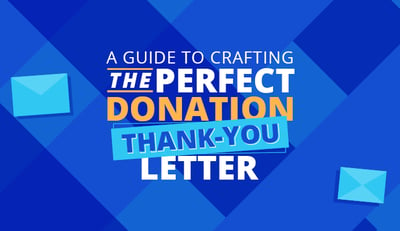
If you work in the nonprofit world, you’ve likely seen the benefits of online fundraising.
Recent technological advancements have allowed nonprofits to maximize donations through features like embeddable donation buttons for their website, donation pages, virtual events, and even artificial intelligence. The future will likely bring even more exciting tools for nonprofits to utilize.
But tech advancements bring both new opportunities and challenges. In this blog post, we’ll explain the concept of software ecosystems, the benefits of organized data, and how you can set a foundation for fundraising success.
If you’ve ever studied biology or watched a few episodes of Planet Earth, you know how delicate the balance is between living things and the environment. Interconnectedness is the key to properly-ordered ecosystems. Your fundraising ecosystem is no different.
When it comes to effective online fundraising, the best strategy is a holistic one that considers all of the tools at your disposal and guides your work in a way that takes advantage of them. Your online fundraising toolkit consists of all the tech solutions you use to organize information about your contacts and donors.
As you expand your online fundraising tools, more information will be needed to balance and connect. These tools will work best when they’re integrated or can automatically or easily connect to your solutions.
Nonprofits that continuously add more online fundraising tools without a way to organize all the data run the risk of diminishing returns with their software. Therefore, it’s vital to have a “source of truth” when building your fundraising foundation. This source of truth is where all your data is stored and easily accessible.
Imagine you’re getting ready to meet one of your major donors for coffee. You’ve had a busy day and didn’t have time to prepare for your conversation before getting to the coffee shop.
Now, in the five minutes you have in the parking lot, how do you find all the information your organization has about this donor? When did they last give, and how much was their gift? Do they subscribe to your emails?
Have you or has someone else from your organization sent a direct appeal recently? Have they ever participated in one of your peer-to-peer fundraising campaigns?
If your data is organized in one system, it will be easy to find this information quickly on your phone via a mobile app before a donor meeting. You won’t have to individually pull up your donor database, email service provider, direct mail records, peer-to-peer fundraising platforms, or other resources.
A donor management system allows you to access all necessary donor information in one place. The platform lets you see each donor’s involvement and foster more personalized, meaningful conversations.
The first step you need to take to organize your software systems is to identify each tool in your current software stack. This will set the framework for your online fundraising strategy.
If you don’t have an integrated donor management system yet, you might manage the data you gather from these tools within each platform. Here are the five categories of tools to consider:
The first step you need to take to organize your software systems is to identify each tool in your current software stack. This will set the framework for your online fundraising strategy.
If you don’t have an integrated donor management system yet, you might manage the data you gather from these tools within each platform. Here are five categories of tools to consider:
Review your online fundraising ecosystem often because technology always changes. The software options that worked last year may not work this year.
Also, assess your software suite at least every year. That way, you can see what’s working, what isn’t, and new tools to set you up for the most fundraising success.
An integrated donor management system will grow with you, allowing you to continue expanding your online fundraising suite and maximize your fundraising efforts.
One of the greatest benefits of a donor management platform, acting as a nonprofit CRM, is that it can connect data from your online fundraising sources. The software holds all of the data collected in your other software or tools in one place. That way, you can continue to expand your online fundraising suite without continuing to spread out your data.
Even if you’re already using a donor management system, it may not integrate with the other online fundraising software you’re using. In this case, you may want to consider another option that does. You’ll also want to ensure your next solution can help you migrate your donor data into the new system.
In addition to integrations, here are some features that robust donor management systems offer:
Investing in a donor management system that offers these additional features and integrates with your existing tools is the foundation that will springboard your fundraising efforts.
Adding additional tools overwhelms many nonprofits, especially with smaller teams or tight budgets. Depending on your chosen donor management provider, the setup process might be easier and offer you a greater return on investment than you think.
Check if your donor management provider offers onboarding or training. A professional can guide you through organizing your data, and you won’t have to worry about adding extra responsibilities for your team.
If you don’t have a donor management system, look for onboarding and training services when researching options to maximize your investment and keep your data organized.
Online fundraising is an effective way for modern nonprofits to raise more funds and strengthen their relationships with their donors – just ensure you have the proper foundations for success.
Work with your team to determine the best next steps and whether adding a donor management system to your online fundraising toolkit is worthwhile.
Getting the right support for your nonprofit is key to its success. Learn how to grow a nonprofit organization and acquire new supporters.
Joshua Meyer is a passionate advocate for nonprofits. He has over 20 years of experience in fundraising, volunteer management, software, and marketing. As VP of Demand Generation at Bloomerang, Josh helps nonprofits acquire and retain donors through innovative marketing and fundraising strategies. He is committed to helping nonprofits make a difference in the world.
As a nonprofit professional, you've likely researched effective donor management strategies...
 by John Killoran
by John Killoran
With nonprofit operations relying heavily on the digital fundraising sphere, it’s important to...
 by Andrew Berry
by Andrew Berry
If you’ve ever spent time fundraising, you know that thanking your donors is one of the most...
 by John Killoran
by John Killoran
As a nonprofit professional, you've likely researched effective donor management strategies...
 by John Killoran
by John Killoran
With nonprofit operations relying heavily on the digital fundraising sphere, it’s important to...
 by Andrew Berry
by Andrew Berry


